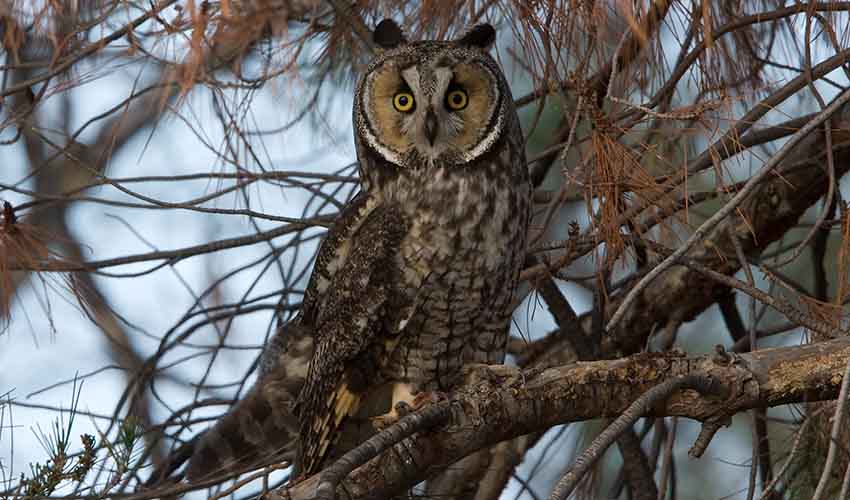Asio
From Arctic tundra to African savannas and Asian rice fields, they have adapted to almost every climate
These birds are part of the true owl family (Strigidae) and are found on nearly every continent, from the tundras of the Arctic to the grasslands of Africa and the forests of South America. Despite their global reach, Asio owls all share a common spirit: they are silent hunters of the twilight, masters of stealth and surprise whose golden eyes seem to glow with the mystery of the night.
While most owls prefer dense forests, Asio species are often found in grasslands, marshes, farmlands, and tundras, where they use their exceptional hearing and low, buoyant flight to detect and capture small mammals. Their long wings and slender bodies give them a distinctive silhouette, especially when seen gliding low over fields at dusk. The Short-eared Owl, for example, is one of the few owls regularly seen hunting in daylight, especially at dawn and sunset, where it hovers and glides like a harrier before dropping silently onto unsuspecting voles or mice. The Long-eared Owl, by contrast, is more of a woodland edge species, roosting by day in dense foliage and emerging at night to hunt in nearby meadows.
Physically, Asio owls are defined by their prominent ear tufts—the “ears” that give the genus its name (from the Latin asio, meaning “horned owl”). These tufts aren’t actually ears but feather structures used for camouflage and communication. When threatened or alarmed, an Asio owl will elongate its body and raise its tufts, mimicking a broken branch or tall stalk of grass to blend into its surroundings. Their large, forward-facing yellow or orange eyes provide excellent binocular vision, while their facial disks—circular arrangements of feathers around the eyes—act like radar dishes, funneling sound directly to their asymmetrical ear openings. This gives them an extraordinary sense of hearing, allowing them to pinpoint prey even under snow or thick vegetation.
Species in this genus
Long-eared owl
Its flight is nearly soundless, thanks to specially fringed wing feathers that disrupt air turbulence
Short-eared owl
Defies the usual “creature of the night” stereotype by thriving in open landscapes and often hunting boldly in daylight



